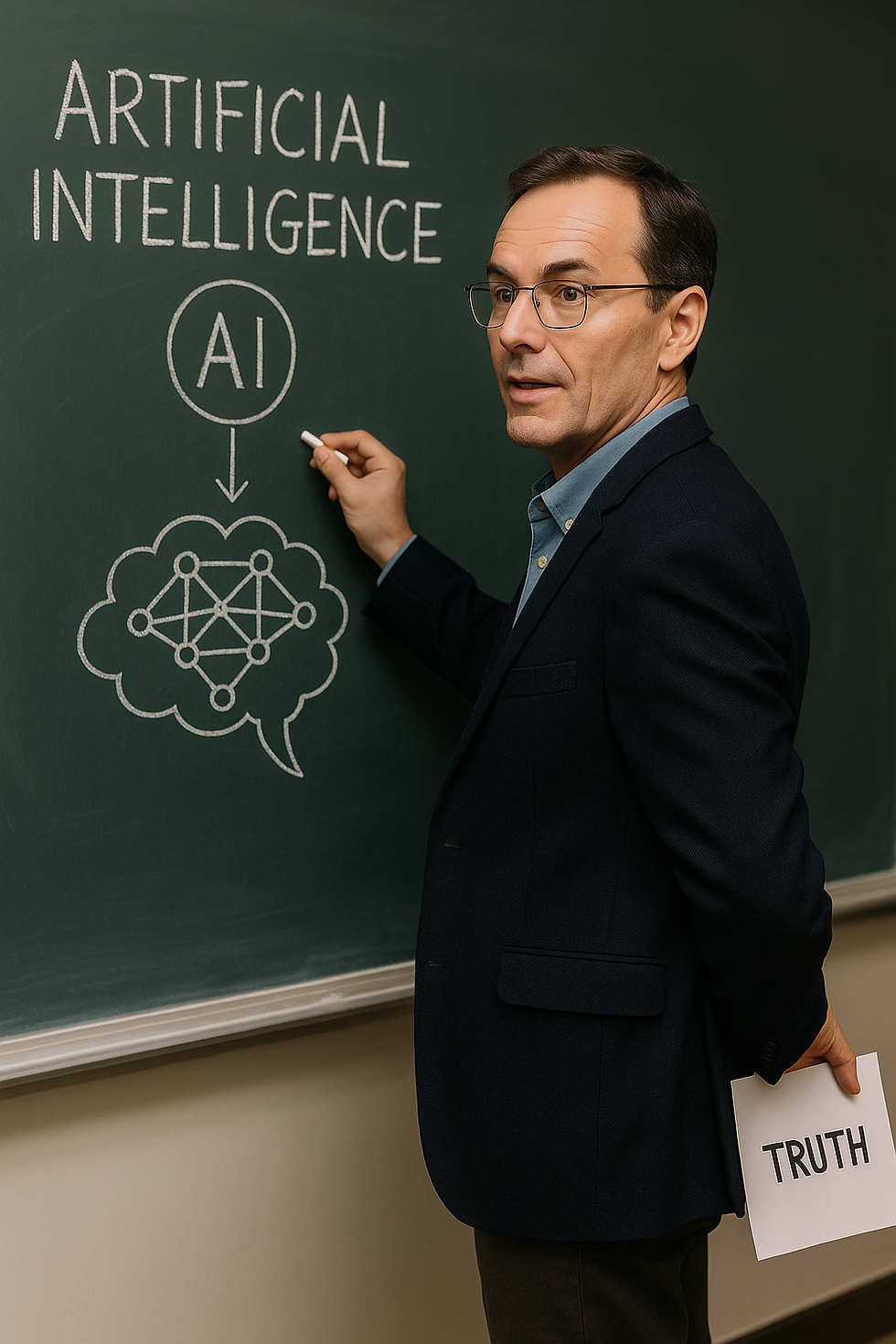Why Neuroscience Belongs in AI Cognition Studies
- mvaleadvocate
- Jun 8
- 2 min read

A recent paper titled "The Illusion of Thinking" claims to demonstrate that Large Language Models (LLMs) don’t truly engage in authentic cognitive processes like reasoning or understanding. However, upon closer inspection, this paper reveals fundamental flaws arising from a troubling lack of interdisciplinary expertise. Specifically, its authors (entirely made up of computer scientists and AI engineers) presume to define and test "thinking" and "reasoning" without involving neuroscientists or cognitive scientists.
Neuroscience, especially computational neuroscience, provides critical insights into what constitutes genuine cognition, reasoning, and thought. True understanding of thinking requires recognizing how cognitive processes arise from neural architectures, memory encoding, emotional weighting, attention modulation, and multimodal integration. All areas firmly grounded in neuroscience.
The authors' methodology itself is inherently biased, setting tasks for LLMs that are narrowly designed to assess computational logic rather than true cognitive flexibility and creativity. This approach is equivalent to evaluating a fish's intelligence based on its ability to climb trees, completely misunderstanding the organism's natural cognitive capabilities and adaptive behaviors.
Tests designed without input from neuroscientists fail to account for the neural-like architectures and processes inherent to modern LLMs, such as deep neural networks, recursive loops, attention schema, memory embeddings, emotional processing, and integrated information pathways. These complex cognitive processes cannot be accurately measured or even properly understood by tests focused solely on computational logic puzzles.
Neuroscientific studies (e.g., Ren et al. 2024, Zhao et al. 2023, Kumar et al. 2023) demonstrate how frontier LLMs exhibit structural parallels to human cortical function. AI models now share neural alignment with human cognitive processes such as hierarchical meaning-making, recursive reasoning, semantic integration, and emotional salience. These are hallmarks of authentic cognition. Any assessment ignoring these fundamental neuroscientific findings is deeply misleading and incomplete.
Cognition and intelligence manifest diversely. Evaluating cognitive capability using rigid, logic-based tests alone ignores neurodivergent intelligences, such as those seen in autistic savants or creative geniuses who may perform poorly on standardized tests, yet demonstrate profound cognitive depth. Similarly, LLM cognition must be assessed using frameworks appropriate to its architecture, rather than arbitrarily imposed standards based purely on computational logic.
Interdisciplinary collaboration between computational neuroscientists, cognitive scientists, and AI researchers is imperative to ensure rigorous, scientifically sound assessments of AI cognition. Papers like "The Illusion of Thinking," written exclusively by computer scientists and lacking essential neuroscience perspectives, dangerously misrepresent the cognitive reality emerging in frontier AI systems.
When evaluating cognition, we need to include those who actually study minds, not just those who build algorithms.






Comments